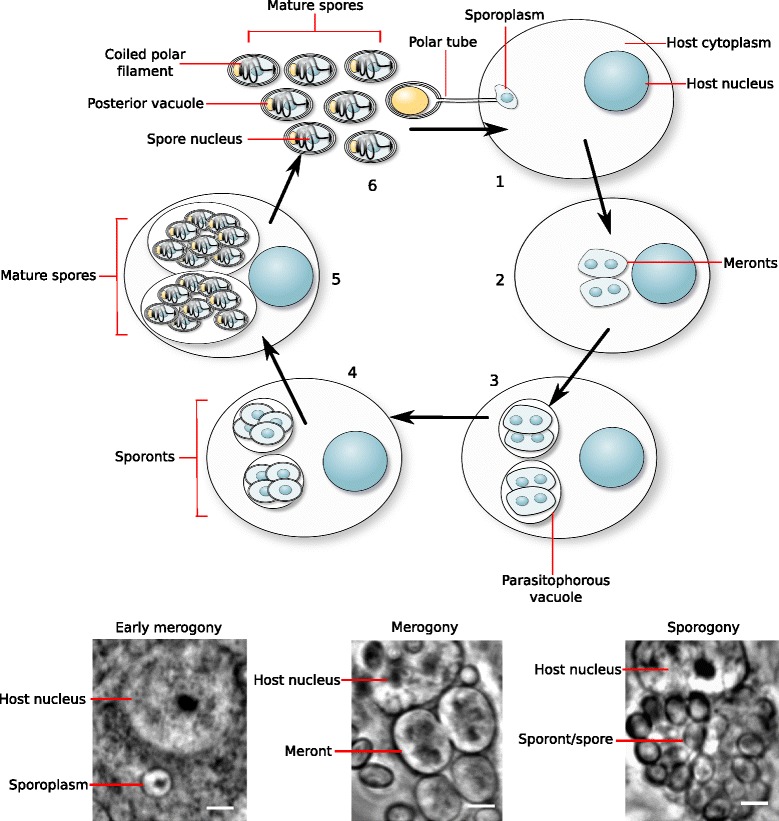Fig. 1.

A schematic lifecycle of Trachipleistophora hominis with phase contrast images of representative intracellular stages. In stage 1, the T. hominis spore injects its contents into the host cell via a proteinaceous polar tube. This uninucleate sporoplasm is the earliest stage of infection of the host cell [119]. Following injection, the parasite – now called the meront - grows and begins to proliferate in the host cell (merogony, the second stage of the parasite lifecycle) [6, 7]. It is unknown how many cycles of proliferation meronts undergo in the host cell before stage three of the lifecycle begins, the transition from meronts to spore-forming sporonts. In Microsporidia this is marked by the deposition of an electron-dense material on the surface of the parasite, and in T. hominis may represent the timing of formation of the parasitophorous vacuole, an additional membrane surrounding the parasite within the host cell [6, 7, 119]. During spore formation (sporogony) the microsporidian spore wall is assembled, and T. hominis undergoes a further round of proliferation [6, 7]. Eventually mature spores form inside the host cell (stage 5). These spores may either eject their polar tubes from within their host cell and infect neighbouring cells, or else be released from the cell in stage 6 of the parasite lifecycle, allowing dissemination of the infection to new cells or new organisms [119]
